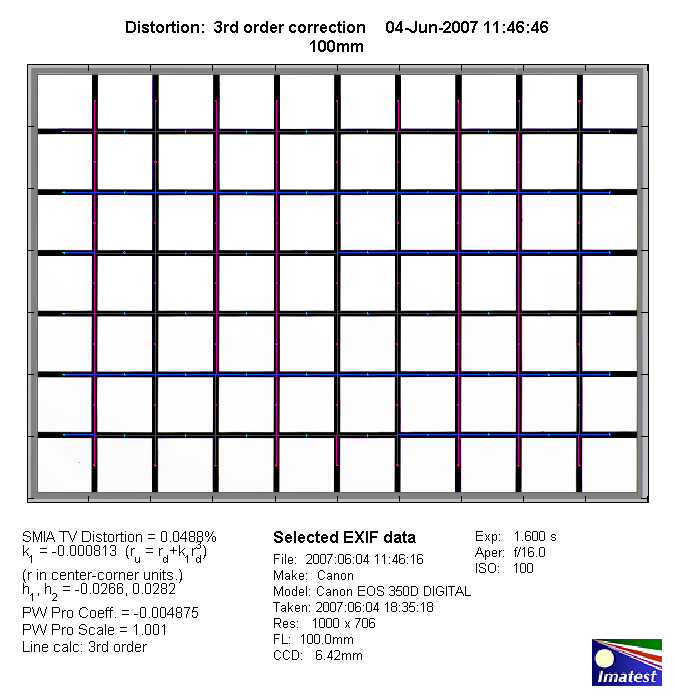|
Tokina AF 100mm f/2.8 AT-X Pro D macro (Canon) - Review / Test Report - Analysis |
|
Lens Reviews -
Canon EOS (APS-C)
|
|
Page 2 of 3
Distortion
The AF 100mm f/2.8 AT-X Pro D shows an extremely low level of distortion (~0.05%) which is
absolutely negligible in field conditions.

The chart above has a real-world size of about 120x80cm.
Vignetting
Thanks to the sweet spot behavior on the EOS 350D vignetting is very well controlled.
The lens remains perfectly usable in this respect even at max. aperture (f/2.8).

MTF (resolution)
The AF 100mm f/2.8 AT-X Pro D was capable to produce very good to excellent resolution
results in the lab straight from f/2.8 till about f/11 both in the center as well as the borders.
The sweet spot of the lens is between f/4 and f/5.6. Beyond f/11 diffraction is the limiting
factor but this is a physical constraint and not a lens issue.
As you can see in the MTF chart below you should avoid very small aperture settings beyond f/16.
At f/32 there's only an image soup left (~800 LW/PH).
An excellent performance but this is typical for most macro lenses out there.
Please note that the MTF results are not directly comparable across the different systems!
Below is a simplified summary of the formal findings. The chart shows line widths per picture height (LW/PH) which can be taken as a measure for sharpness.
If you want to know more about the MTF50 figures you may check out the corresponding Imatest Explanations
Chromatic Aberrations (CAs)
Tokina lenses tends to suffer from higher than average chromatic aberrations (color shadows
at harsh contrast transitions) and for a fix-focal lens the numbers are indeed relatively high peaking
at around ~1px on the average at the image borders. In absolute terms and in the real life this is
usually still not something to worry about though.
Please note that lateral CAs can be corrected without any significant impacts via tools.

At large apertures the Tokina seems to produce a bit of purple fringing (color blooming) as well as
Longitudinal Chromatic Aberrations (LoCA) - greenish to reddish halos at focus transitions.
See the last left sample image below.
|